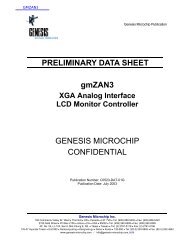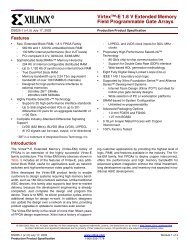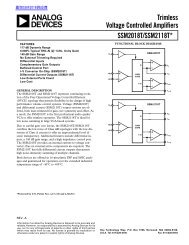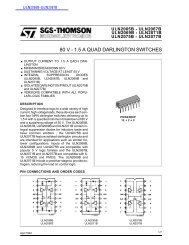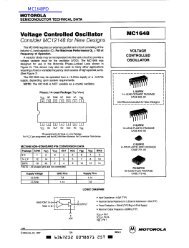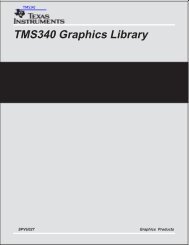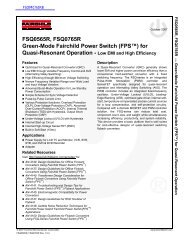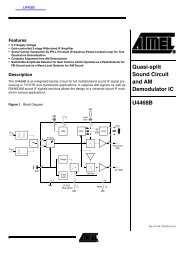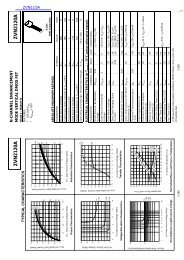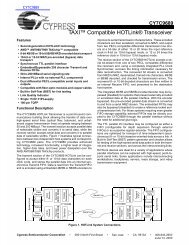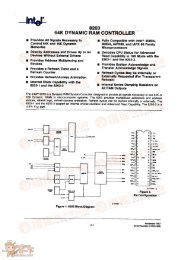Create successful ePaper yourself
Turn your PDF publications into a flip-book with our unique Google optimized e-Paper software.
Numonyx <strong>Wireless</strong> <strong>Flash</strong> <strong>Memory</strong> (<strong>W30</strong>)<br />
14.8 Clock Edge (RCR[6])<br />
Configuring the valid clock edge enables a flexible memory interface to a wide range of<br />
burst CPUs. Clock configuration sets the flash device to start a burst cycle, output data,<br />
and assert WAIT on the rising or falling edge of the clock.<br />
14.9 Burst Wrap (RCR[3])<br />
The burst wrap bit determines whether 4-word, 8-word, or 16-word burst accesses<br />
wrap within the burst-length boundary, or they cross word-length boundaries to<br />
perform linear accesses.<br />
No-wrap mode (RCR[3]=1) enables WAIT to hold off the system processor, as it does in<br />
the continuous burst mode, until valid data is available.<br />
In no-wrap mode (RCR[3]=0), the flash device operates similarly to continuous linear<br />
burst mode, but consumes less power during 4-word, 8-word, or 16-word bursts.<br />
For example, if RCR[3]=0 (wrap mode) and RCR[2:0] = 1h (4-word burst), possible<br />
linear burst sequences are 0-1-2-3, 1-2-3-0, 2-3-0-1, 3-0-1-2.<br />
If RCR[3]=1 (no-wrap mode) and RCR[2:0] = 1h (4-word burst length), then possible<br />
linear burst sequences are 0-1-2-3, 1-2-3-4, 2-3-4-5, and 3-4-5-6. RCR[3]=1 not only<br />
enables limited non-aligned sequential bursts, but also reduces power by minimizing<br />
the number of internal read operations.<br />
Setting RCR[2:0] bits for continuous linear burst mode (7h) also achieves the above 4word<br />
burst sequences. However, significantly more power might be consumed. The 1-<br />
2-3-4 sequence, for example, consumes power during the initial access, again during<br />
the internal pipeline lookup as the processor reads word 2, and possibly again,<br />
depending on system timing, near the end of the sequence as the flash device pipelines<br />
the next 4-word sequence. RCR[3]=1 while in 4-word burst mode (no-wrap mode)<br />
reduces this excess power consumption.<br />
14.10 Burst Length (RCR[2:0])<br />
The burst length is the number of words the flash device outputs in a synchronous read<br />
access. 4-word, 8-word, 16-word, and continuous-word are supported.<br />
In 4-word, 8-word, or 16-word burst configuration, the burst wrap bit (RCR[3])<br />
determines whether burst accesses wrap within word-length boundaries, or they cross<br />
word-length boundaries to perform a linear access.<br />
After an address is specified, the flash device outputs data until it reaches the end of its<br />
burstable address space. Continuous burst accesses are linear only (burst wrap bit<br />
RCR[3] is ignored during continuous burst) and do not wrap within word-length<br />
boundaries (see Table 30, “Sequence and Burst Length” on page 84).<br />
November 2007 Datasheet<br />
Order Number: 290702-13 85



